Ford IAC valve replacement:
Below are some pictures of the original idle air control valve from a
1998 ford crown victoria. In this case, one day the vehicle
mysteriously refused to start when the ignition key was turned. The
starter cranked, but the engine would "flood out" and the exhaust had a
slight gasoline odor to it. Pushing the gas pedal down a little while
turning the ignition key started the engine and kept it running, but
the vehicle would stall out as soon as the accelerator pedal was
released.
The symptoms were consistent with a defective idle air control (IAC)
valve. Base idle on this vehicle should be around 800 RPM in park,
but engine crankshaft speed appeared to be dropping so low that the
engine stalled out. Since this vehicle did not have a factory installed
tachometer, a scantool was connected to the obd2 diagnostic port under
the dashboard and revealed that no error codes were present and the
idle was very smooth if engine speed were manually raised to around 800
RPM via the accelerator pedal. After hitting the IAC with the plastic
handle of a screwdriver a couple times, the low idle speed problem
"fixed" itself. But to prevent repeat occurences of this problem in the
future, the IAC was replaced with a new service assembly.
Some other points of intrest about the IAC:
- Police use often involves idling the vehicle's engine for several
hours a day. This gives the IAC valve a real workout and may cause the
device to fail with relatively little mileage accumulated on the
odometer. Civilian "remote starters" and getting "stuck in traffic"
frequently will also increase the rate at which this device "wears out".
- The IAC valve is a pulse width modulated device and cannot
accurately be tested by simply applying +12V and ground
- A defective IAC valve can cause intermittent stalling problems
when the vehicle operator releases their foot from the accelerator
pedal. If the vehicle is stalling or misfiring under medium throttle
application, there are other problems present besides a defective IAC
valve though.
- The old backyard mechanic method of raising the base idle speed
via the throttle stop screw on the throttle body is highly discouraged
and likely to cause other problems. In fact, the screw in question has
it's head removed by the manufacturer to deter adjustment. And if the
goverment in your area mandates vehicle smog testing, your vehicle is
likely to fail the test if this fastener has been tampered with.
- Installation of a "pre-owned" IAC valve from a salvage yard
vehicle is discouraged. First, you may not get the "right one" for your
car. Since there are a handful of different iac valves released for the
hundreds of different crown victoria pcm calibrations that have been
released over the years. And these devices are also wear items, so
you're somewhat likely to get a "bad one" that won't "fix" your problem.
- Malfunction of the IAC valve is sometimes dependent on the
ambient temperature. e.g. warming the IAC valve with a warm hair dryer
after the vehicle has sat outside in cold weather for an extended
period might cause the IAC valve to function properly until it cools
off again.
- All 1996 and later crown vics IAC valves look very similar in
appearance and have the valve located in the same location on the back
of the throttle body. 1992-1995 crown vics have the valve mounted in a
different location though.
- If the cosmetic engine cover is still present over the throttle
body, it will be necessary to remove it prior to replacing the IAC
valve. It is retained to the throttle body using a single stud and nut.
- It may be useful to lubricate the bolts which retain the IAC to
the throttle body with some penetrant oil such as WD40 or PB Blaster
prior to attempting removal of the bolts. But the top area of the
engine is usually relatively dry and these bolts very often turn freely
without use of pentrant oil or heat from a torch.
- IAC valves are sealed non-serviceable items and not designed to
be "cleaned"
with solvents such as carberator cleaner. Any results that may be
realized
as a result of "cleaning" are likely to be short lived.
Another point of intrest, the IAC valve basically creates an
electrically controlled air leak on the throttle body. So if you have a
vacuum leak elsewhere, it can exhibit symptoms similar to a bad IAC
valve. When looking for vacuum leaks, don't overlook:
- The vacuum controlled automatic release system for the parking
brake (the control valve is on top of the steering column shifter tube,
the release actuator on the foot pedal assembly). Note: This system has
been "decontended" from 1999+ police interceptors and 2003+ civilian
vehicles.
- The mode doors for the air conditioning & heater system are
vacuum controlled. If air sporadically flows from the defroster vents
when the controls are set to the floor or dashboard vent positions,
then you've definetly got a vacuum leak somewhere. Some pictures of the
interior passenger cabin vacuum
hoses are avaliable by clicking here.
- The vacuum based brake booster diaphram.
- The vaccum based positive crankcase ventilation (PCV) system
- The evaporative emissions system (controls gas tank hydrocarbon
vapors)
- The exhaust gas recirculation (EGR) system. The DPFE valve is
located on the of the back of the engine block in front of the firewall
and can be difficult to find if you haven't seen one before.
- The vaccum based fuel pressure regulator system. You'd likely
notice some driveability systems if this were malfunctioning. Note:
2003 and later crown vics use a returnless fuel system that no longer
has a fuel rail mounted pressure regulator.
- The vacuum distribution block on the firewall. After enough
poweron hours & resulting engine bay heat, the vacuum lines get
brittle and develop
cracks. This area is very easy to access with the engine removed. But
with
it in place, you may want to remove the winshield wiper transmission
housing
assembly to get better access to the area.
- The throttle body itself could be leaking significant amounts of
air around where the throttle plate shaft passes through the throttle
body housing. The throttle shaft wears a miniscule amount of aluminum
away each time the gas pedal is moved. After a bunch of movement, the
circular hole in the throttle body starts to become eliptical and the
throttle shaft a little skinnier than
it should be. Air leaks are the least of your worries here, as a
severly worn
throttle shaft can cause the accelerator linkage to bind (a.k.a. gas
pedal
stuck to floor and won't pop back up after you release your foot).
Do keep in mind that the larger the vacuum leak is, the more it will
impact engine idle quality. For example pulling the vacuum hose off the
brake booster or pcv valve will cause the engine to run really lean or
to stall out immediatetly. But you'd likely need to monitor fuel trim
and other block learn values with an electronic scantool to notice a
vacuum hose that was pulled off a climate control system mode door
actuator.
Also keep in mind that model year 2005 and later crownvics have
electronic throttle control (ETC) and no longer use an idle air control
valve anymore. The drive-by-wire powertrain control module (PCM) can
command the throttle body butterfly plate to any position desired. So a
valve to allow a little air to bypass the throttle body
butterfly valve at idle speeds is no longer needed.
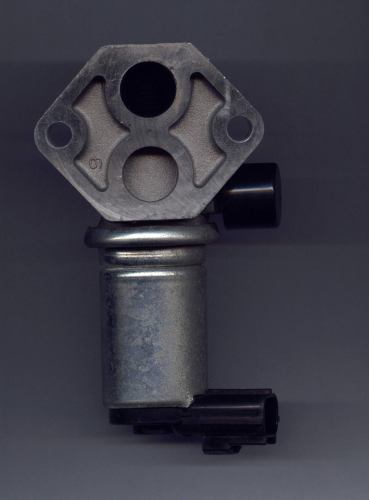
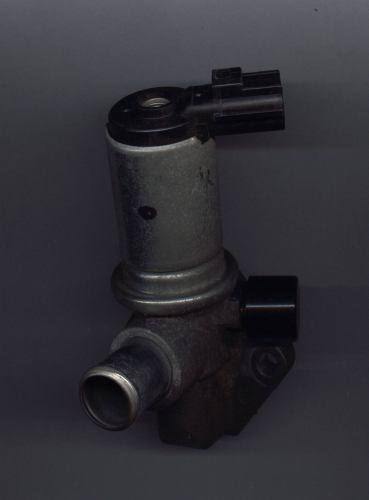
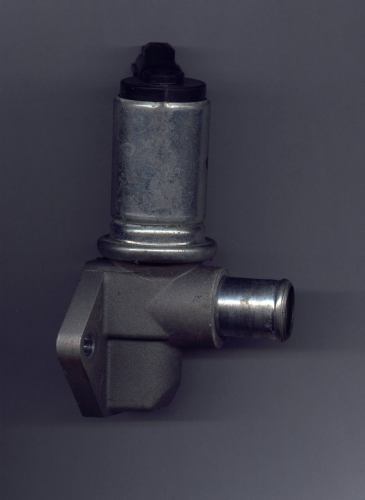
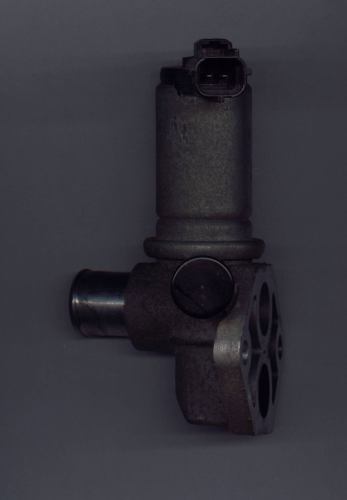
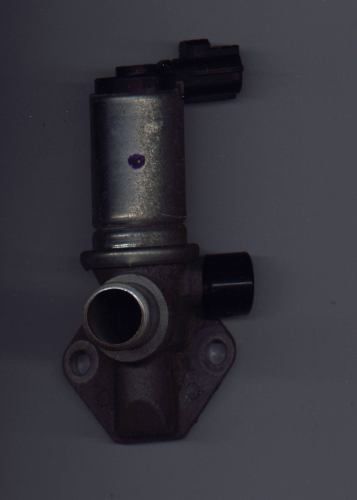
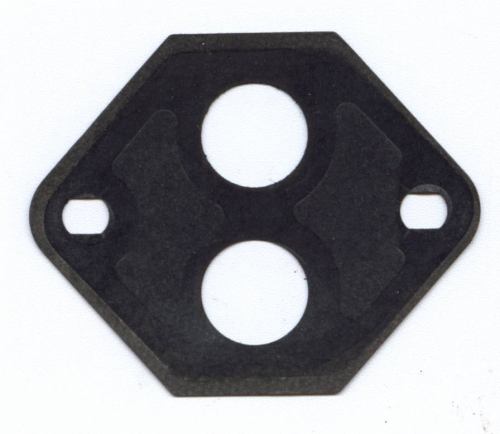
Note: IAC valves are sealed
non-serviceable items and not designed to
be "cleaned"
with solvents such as carberator cleaner. So any results that may be
realized
as a result of "cleaning" are likely to be short lived.
Additional pictures of a crown victoria throttle body, an iac valve,
and an air intake plenum are avaliable by clicking here.





